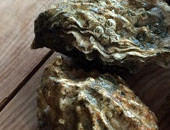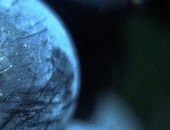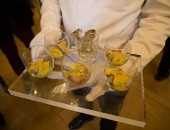As a critic specialising in the wines from Bordeaux, I confess I'm not much interested in the so-called 'second wines' of Bordeaux Châteaux. Many fail to live up to their billing: they're often too inconsistent even to dignify the name of their Appellations, frequently too dry to encourage their purchase, or to cellar, let alone to drink. These 'second wines' are a kind of subsidiary market destined for consumers who know little about wine but who are reassured by buying a wine associated with a known label. Merchants and producers have gauged their ignorance and use this to their benefit and they do nothing to clarify the situation. Even to the point where frequently the name chosen for their second wine, as in the design of its label, are so close to the first wine (le premier vin) that they represent a real source of confusion. Once, during a tasting at Pessac-Léognan, I found a particular wine rather feeble. I looked at the label and saw it was marked 'Olivier'. I was very disappointed until I realised that this was not Château Olivier, but simply the name of its second wine. Since then Château Olivier have changed its name ( it's now known as La Seigneurie d'Olivier du Château Olivier).
Nonetheless, second wines are necessary for the production of quality wines (by quality, I mean that the wines possess body, complexity and character on the palate). In Bordeaux, a Château has the right to sell all of its production under the name of its domain. However, all producers are aware of the unequal quality of the harvested crop even before their assemblage (blend). Some are better at it than others. But mixing the less good grapes with the good ones will always reduce the quality. In viticulture, 2% to 4% of the terrain is frequently re-planted in order to keep the vines in a good state. Less good lots at the harvest therefore come from younger vines where the grapes don't possess the density and concentration of the older vines; or where older plantations are planted on soils which are less good, or certain varieties didn't perform as well due to the prevailing climatic conditions during the year. What can one do with these wines? Create a second label: which will be distinguished from the first wine and which won't carry the name of the Château on the label. Also, every cru has the right to produce two wines with different names from the same domain. The 'second wine' therefore will always be known by the absence of the word Château in front: for example, Clos Du Marquis, second wine of Château Léoville Las Cases can never be called 'Château' Clos du Marquis.
This necessity of selecting only the best grapes for the first wine has always been a major advance in the search for quality. At Château Margaux, for example, a second selection has existed since the 19th century. Pavillon Rouge, the second wine, was born in 1908. In the past, the grapes from less good lots were sold 'en vrac' (meaning in bulk, without any kind of packaging), without identifying the source, but with the name of the Appellation. This enabled merchants to make up their own assemblages (blends) which they then sold under their own name. For example, 'Pauillac' or the 'le Haut-Médoc de la Baronnie'. In the 1990s the market for generically labelled wines crashed. Consumers looked for a reference. Bordeaux merchants ceased the practise of making vins de marque and concentrated on the sale of more juicy offerings from the known crus. Proprietors preferred to sell under their own name wines hitherto sold anonymously by the merchants on the basis of a current price for the tonneau (4 barrels) from each Appellation. For both parties it was much more profitable.
Of course, to put a beautiful label on a bottle is not always sufficient - the wine still needs to attain a certain quality threshold. At Château Grand Puy Lacoste, François Xavier Borie produces a 'second wine' called Lacoste Borie. He has always been watchful in excluding these wines from Grand Puy Lacoste. But he also refuses to include in Lacoste Borie all the vins de presse (wines from the press) which may be too tannic, too hard or dry, to ensure it is enjoyable to drink. So, to make a good second wine actually requires a third selection. To make a third selection of good quality requires a fourth, and so on. A requirement that not all producers, whether from greed or lack of know-how, have fulfilled. In this sense, by no stretch of the imagination do 'second wines' in any way represent the first. For example, I like the gentle touch of Pichon Comtesse de Lalande. I could imagine finding these characteristics in its second wine La Reserve de la Comtesse. This is a long way from being the case. There exist only a few second wines capable of sharing the style of their older more distinguished brothers whilst maintaining a genuine personality of their own. One can't ask that they may be as profound as the 'premier vin'. By definition, if the all lots were as good as each other, they would pass into the assemblage of the first wine. On the other hand, nothing stops the producers from having more consideration for their second wine by making them rather more agreeable, more fruity, with body, without those drying tannins and why not some kind of personality to round it off? It's possible if the proprietors could be bothered and wouldn't consider their 'second wines' as simply 'overspill' of the first wines.
And besides, the market recognises the positive influence of these wines (see ( Les Fiefs de Lagrange, La Croix de Beaucaillou, Clos du Marquis, Pavillon Rouge, Alter Ego on the Left Bank and on the Right Bank Carillon de l’Angélus, Duo de la Conseillante, La Petite Eglise, Virginie de Valandraud, the last vintages of La Chapelle d’Ausone and Petit Cheval). Le Pauillac de Château Latour, the 'third wine', is not made as Les Forts de Latour or even at Château Latour. It has its own identity, based on the vision of the professionals which make it. It is vinified with another perspective, with less tannic extraction, a different élévage (up-bringing). It also contains more Merlot in the blend than Forts de Latour, or Latour, in order to gain some immediate softness, whilst the other two wines are for keeping. It's a third wine conceived to be made not from the discarded material of the first or second wines. This is a similar story for the hugely accomplished Alter Ego de Palmer which is a beacon for 'second wines'. Aware of this, Thomas Duroux manager of Palmer, even refutes the name of a 'second wine' preferring to speak of 'another wine' made by Château Palmer.
There is another aspect which concerns me about second wines: the absence of any notion of a vintage. In 2009 and 2010, both great years, I was amazed to find that the the general quality of second wines was no better. There is a good reason: when a parcel or cuvée is very good, they pass into the first wine and are sold for a much higher price. So, I would advise buying less well-known wines from the reputed Appellation.
In conclusion my tastings underline the rather heterogenous character of 'second wines' in Bordeaux. Some attain a very high level whilst others are just, frankly, a joke. For the most part, they should be better, tastier, more exciting and show that Bordeaux can produce pleasing exciting wines, which are immediately enjoyable, besides those more mysterious wines destined for ageing, impenetrable when young and still not yet properly 'educated' (through their élévage). A market that cruelly escapes them.
As a critic specialising in the wines from Bordeaux, I confess I'm not much interested in the so-called 'second wines' of Bordeaux Châteaux. Many fail to live up to their billing: they're often too inconsistent even to dignify the name of their Appellations, frequently too dry to encourage their purchase, or to cellar, let alone to drink. These 'second wines' are a kind of subsidiary market destined for consumers who know little about wine but who are reassured by buying a wine associated with a known label. Merchants and producers have gauged their ignorance and use this to their benefit and they do nothing to clarify the situation. Even to the point where frequently the name chosen for their second wine, as in the design of its label, are so close to the first wine (le premier vin) that they represent a real source of confusion. Once, during a tasting at Pessac-Léognan, I found a particular wine rather feeble. I looked at the label and saw it was marked 'Olivier'. I was very disappointed until I realised that this was not Château Olivier, but simply the name of its second wine. Since then Château Olivier have changed its name ( it's now known as La Seigneurie d'Olivier du Château Olivier).
Nonetheless, second wines are necessary for the production of quality wines (by quality, I mean that the wines possess body, complexity and character on the palate). In Bordeaux, a Château has the right to sell all of its production under the name of its domain. However, all producers are aware of the unequal quality of the harvested crop even before their assemblage (blend). Some are better at it than others. But mixing the less good grapes with the good ones will always reduce the quality. In viticulture, 2% to 4% of the terrain is frequently re-planted in order to keep the vines in a good state. Less good lots at the harvest therefore come from younger vines where the grapes don't possess the density and concentration of the older vines; or where older plantations are planted on soils which are less good, or certain varieties didn't perform as well due to the prevailing climatic conditions during the year. What can one do with these wines? Create a second label: which will be distinguished from the first wine and which won't carry the name of the Château on the label. Also, every cru has the right to produce two wines with different names from the same domain. The 'second wine' therefore will always be known by the absence of the word Château in front: for example, Clos Du Marquis, second wine of Château Léoville Las Cases can never be called 'Château' Clos du Marquis.
.../continued...you need to upgrade your subscription if you wish to read this content.
As a critic specialising in the wines from Bordeaux, I confess I'm not much interested in the so-called 'second wines' of Bordeaux Châteaux. Many fail to live up to their billing: they're often too inconsistent even to dignify the name of their Appellations, frequently too dry to encourage their purchase, or to cellar, let alone to drink. These 'second wines' are a kind of subsidiary market destined for consumers who know little about wine but who are reassured by buying a wine associated with a known label. Merchants and producers have gauged their ignorance and use this to their benefit and they do nothing to clarify the situation. Even to the point where frequently the name chosen for their second wine, as in the design of its label, are so close to the first wine (le premier vin) that they represent a real source of confusion. Once, during a tasting at Pessac-Léognan, I found a particular wine rather feeble. I looked at the label and saw it was marked 'Olivier'. I was very disappointed until I realised that this was not Château Olivier, but simply the name of its second wine. Since then Château Olivier have changed its name ( it's now known as La Seigneurie d'Olivier du Château Olivier).
Nonetheless, second wines are necessary for the production of quality wines (by quality, I mean that the wines possess body, complexity and character on the palate). In Bordeaux, a Château has the right to sell all of its production under the name of its domain. However, all producers are aware of the unequal quality of the harvested crop even before their assemblage (blend). Some are better at it than others. But mixing the less good grapes with the good ones will always reduce the quality. In viticulture, 2% to 4% of the terrain is frequently re-planted in order to keep the vines in a good state. Less good lots at the harvest therefore come from younger vines where the grapes don't possess the density and concentration of the older vines; or where older plantations are planted on soils which are less good, or certain varieties didn't perform as well due to the prevailing climatic conditions during the year. What can one do with these wines? Create a second label: which will be distinguished from the first wine and which won't carry the name of the Château on the label. Also, every cru has the right to produce two wines with different names from the same domain. The 'second wine' therefore will always be known by the absence of the word Château in front: for example, Clos Du Marquis, second wine of Château Léoville Las Cases can never be called 'Château' Clos du Marquis.
.../continued...you need to subscribe to be able to view content from Fine Wine magazine.
Subscribe HERE to Fine Wine magazine to read the rest of this content or log yourself in if you are already a member.










